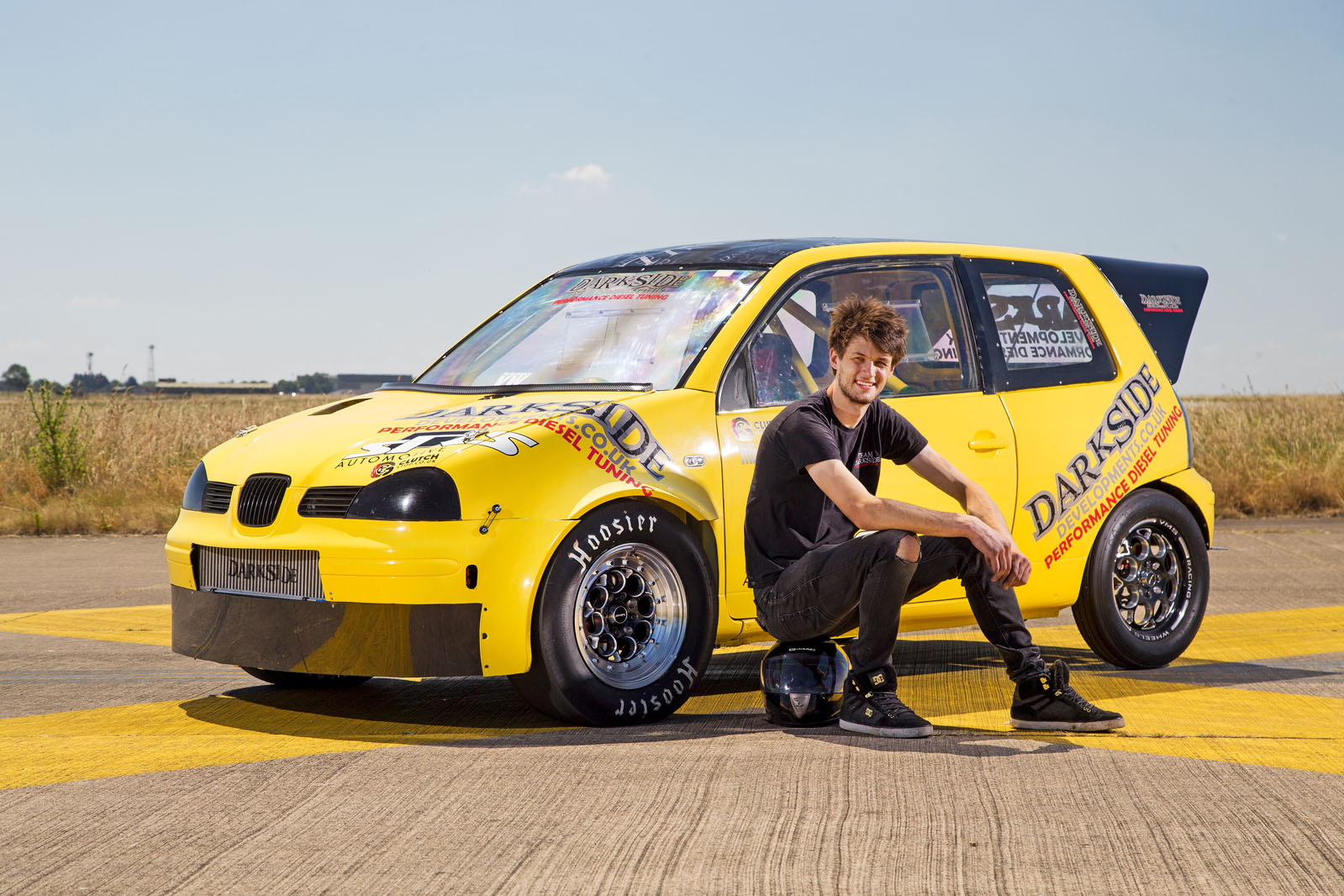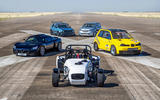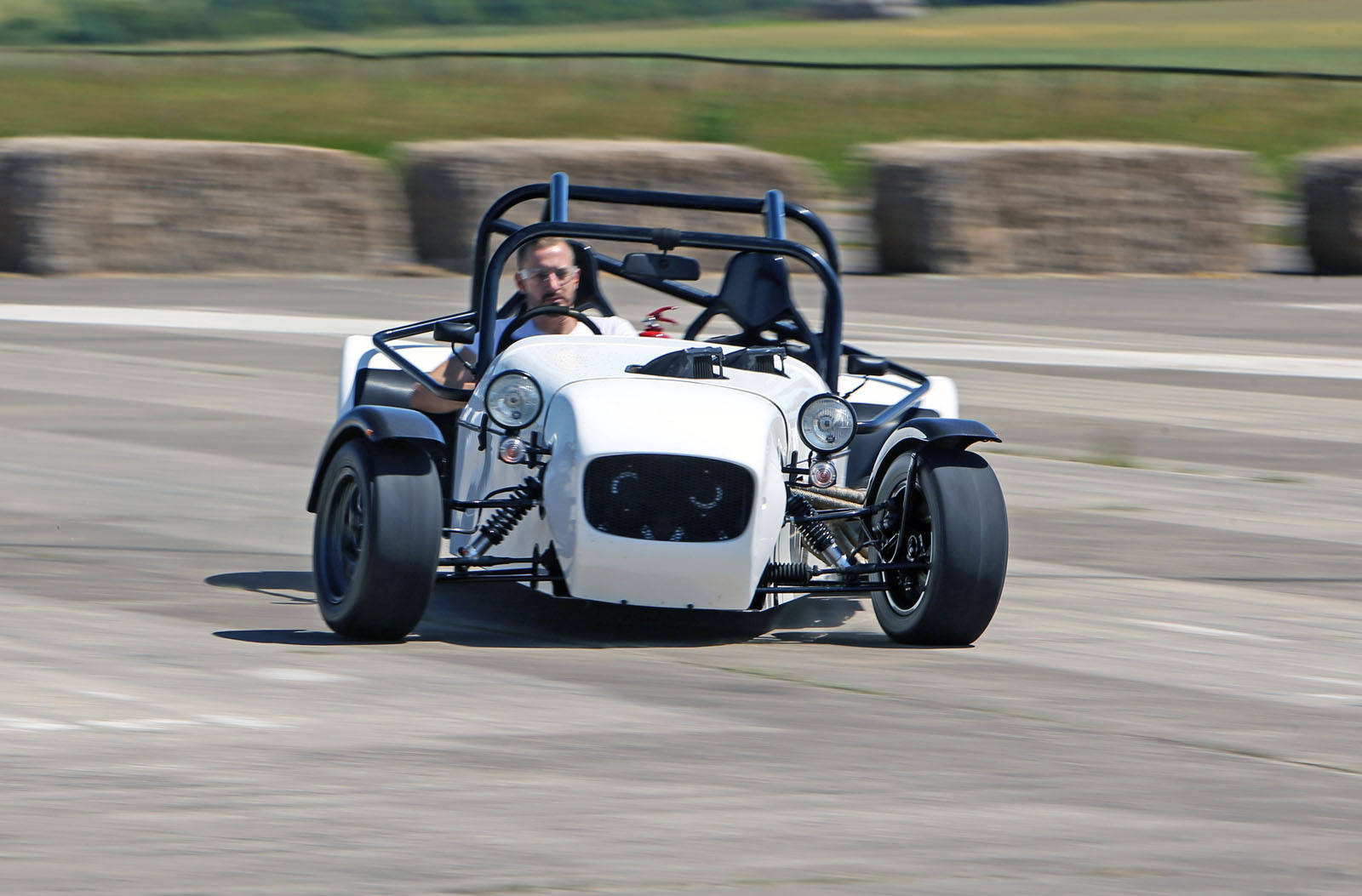In garages, workshops and sheds right across the UK, tinkerers and would-be mechanics get their fingers dirty.
Most undertake straightforward vehicle maintenance, while others restore bodywork or make running-gear modifications. A small number, however, squirrel themselves away for weeks at a time and only emerge once they’ve built something truly staggering. It might be a lightweight track car with two motorcycle engines, or a diesel supermini that’s faster than a modern super-saloon.
Welcome to the world of the one-off special – a world where people tend not to ask why but why not?
Seat Arosa drag car:
“You start off in second gear, engage the launch control system to hold the engine revs, then try to get the clutch release just right,” says Paul Lynas. “As soon as you let go of the clutch, it’s like being catapulted. That’s the only way I can describe it.”
Lynas is the driver of this Seat Arosa drag car, a Darkside Developments project. It was with him at the wheel that the Arosa recorded a quarter-mile time of 9.7sec at Santa Pod. It hit 60mph in 2.3sec and 100mph in a scarcely believable 4.8sec that day. For a while, it was the fastest front-wheel-drive diesel car on the planet.

Darkside Developments built this car to push the boundaries of what could be achieved with a four-cylinder diesel engine. The base unit is a 2.0-litre common-rail lump, uprated in just about every way imaginable.
With a Borg Warner turbocharger from a John Deere combine harvester, which boosts at an astonishing four bar, the engine develops 550bhp and 650lb ft. The exhaust runs right out through the bonnet and every time Lynas builds the engine revs, a thick, acrid plume of smoke bursts into the air like ash erupting from a volcano.












































 Over time, Pinder educated himself in the dark art of vehicle aerodynamics. After his frightening moment at Copse, he decided to fit a rear lip spoiler, then a bigger front splitter, then side skirts, then a flat floor, then a bigger rear wing and eventually a diffuser. He made all of it himself: “I tested everything using little tufts of wool to see which way the airflow was going. The rear diffuser that’s on there now was my second attempt at fibreglassing. They reckon seven degrees of rake is as much as you want on a non-aero car like mine.”
Over time, Pinder educated himself in the dark art of vehicle aerodynamics. After his frightening moment at Copse, he decided to fit a rear lip spoiler, then a bigger front splitter, then side skirts, then a flat floor, then a bigger rear wing and eventually a diffuser. He made all of it himself: “I tested everything using little tufts of wool to see which way the airflow was going. The rear diffuser that’s on there now was my second attempt at fibreglassing. They reckon seven degrees of rake is as much as you want on a non-aero car like mine.”





Add your comment